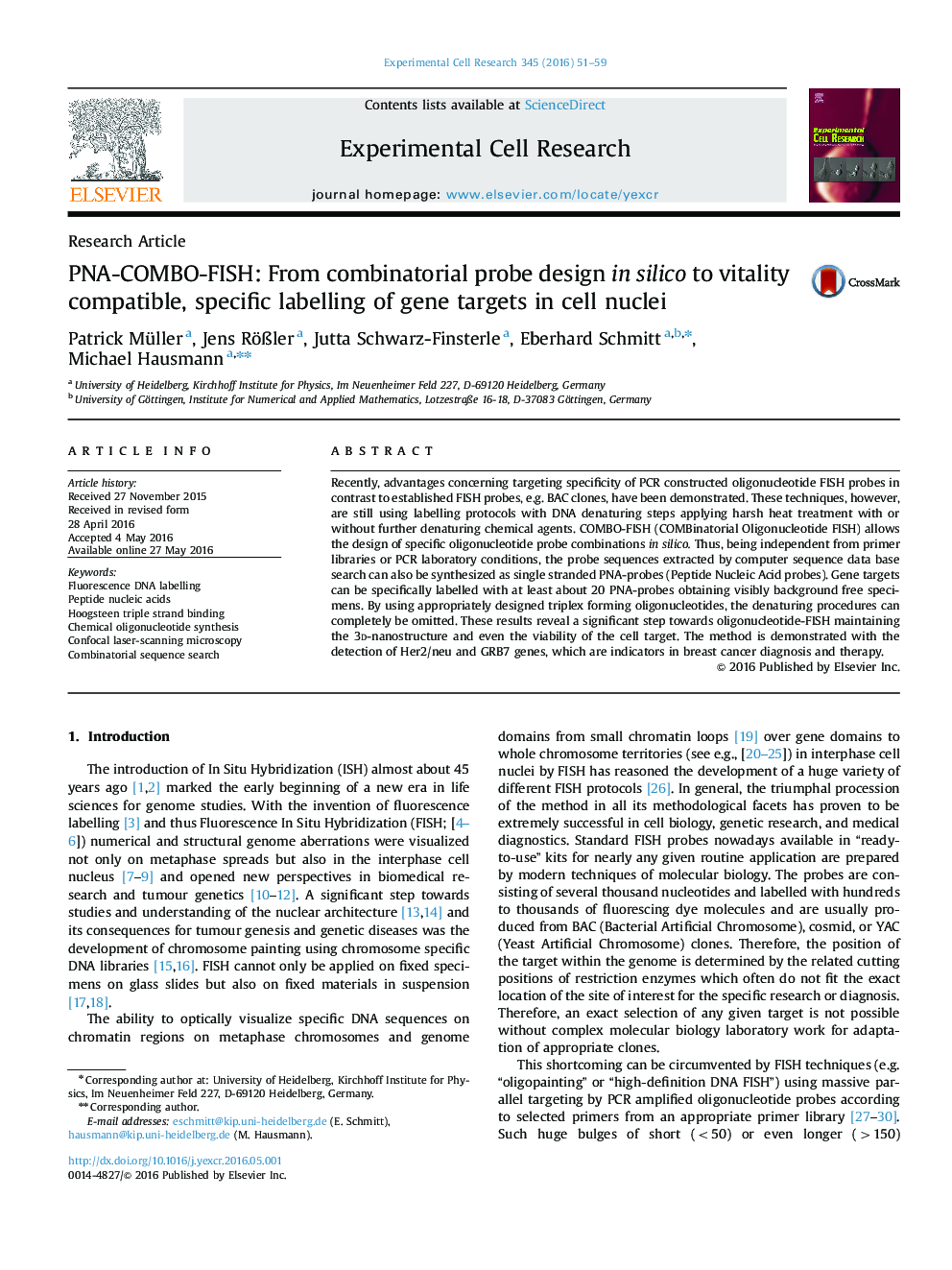| Article ID | Journal | Published Year | Pages | File Type |
|---|---|---|---|---|
| 2129962 | Experimental Cell Research | 2016 | 9 Pages |
•Denaturation free protocols preserve 3D architecture of chromosomes and nuclei.•Labelling sets are determined in silico for duplex and triplex binding.•Probes are produced chemically with freely chosen backbones and base variants.•Peptide nucleic acid backbones reduce hindering charge interactions.•Intercalating side chains stabilize binding of short oligonucleotides.
Recently, advantages concerning targeting specificity of PCR constructed oligonucleotide FISH probes in contrast to established FISH probes, e.g. BAC clones, have been demonstrated. These techniques, however, are still using labelling protocols with DNA denaturing steps applying harsh heat treatment with or without further denaturing chemical agents. COMBO-FISH (COMBinatorial Oligonucleotide FISH) allows the design of specific oligonucleotide probe combinations in silico. Thus, being independent from primer libraries or PCR laboratory conditions, the probe sequences extracted by computer sequence data base search can also be synthesized as single stranded PNA-probes (Peptide Nucleic Acid probes). Gene targets can be specifically labelled with at least about 20 PNA-probes obtaining visibly background free specimens. By using appropriately designed triplex forming oligonucleotides, the denaturing procedures can completely be omitted. These results reveal a significant step towards oligonucleotide-FISH maintaining the 3d-nanostructure and even the viability of the cell target. The method is demonstrated with the detection of Her2/neu and GRB7 genes, which are indicators in breast cancer diagnosis and therapy.
Graphical abstractFigure optionsDownload full-size imageDownload high-quality image (202 K)Download as PowerPoint slide
